With the intense heat and dry climate of a desert, not many plant species can survive in one. In order to do so, they have got to be resilient, and they have got to be able to go long periods of time without water.
If we were to ask you to think of a desert plant, what would be the first thing to come into your head?
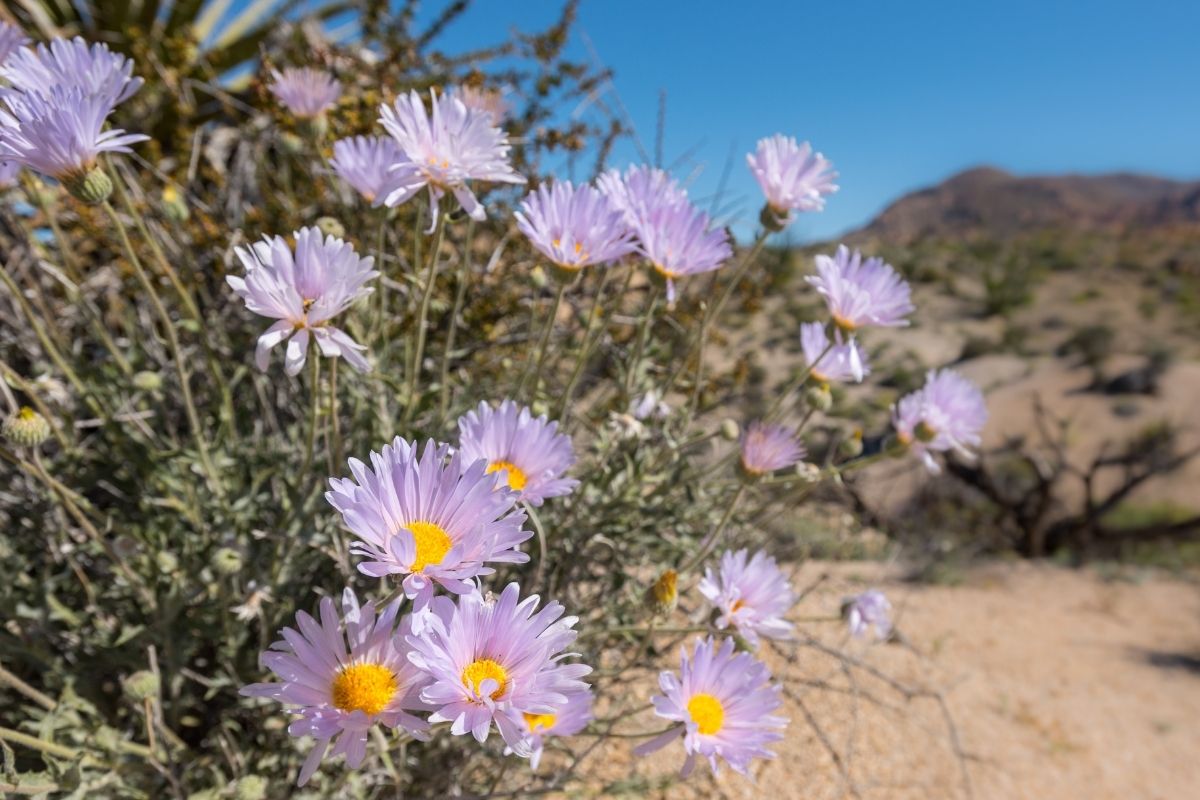
A cactus? Us, too. I’m not sure about you guys, but when I picture a desert, I don’t see pretty flowers anywhere; just yellow sand and a few cacti dotted here and there.
However, there are actually hundreds of flower species that live and blossom in deserts. From hosting cactus flowers to individual wildflowers, the desert can be a hub for all sorts of colorful plant life.
Take a look below at a list of our favorite desert flowers, to get a clearer picture of what plant life is really like in the desert sun.
1. California Poppy

You may have seen or heard of this pretty flower, because it is California’s official state flower. It grows predominantly in California’s Mojave Desert, where it is able to survive thanks to its high drought resistance.
Once rain falls, which rarely happens, this flower’s seeds are brought to life and flower rapidly.
This flower is a bright orange hue and shares the shape of the regular red poppy, with delicate leaves and long green stalks.
2. Arizona Poppy
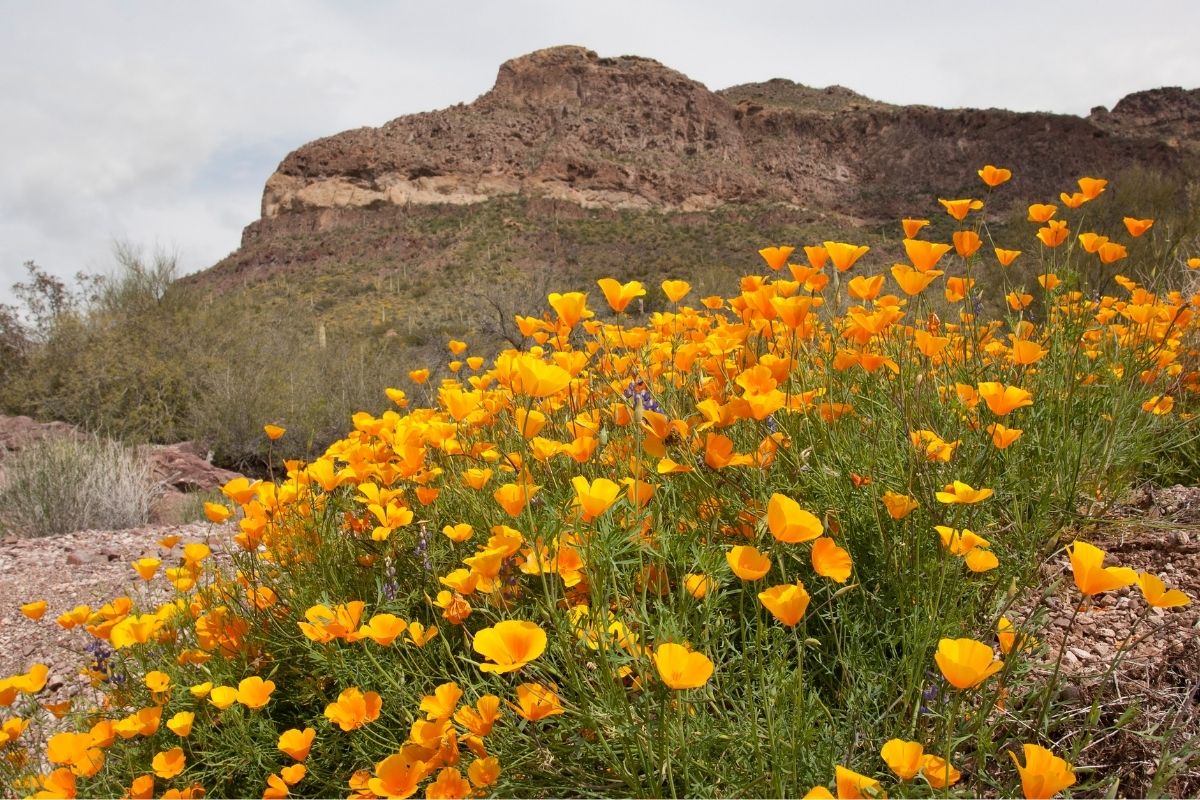
This poppy is found in both Mexico and California, but it is native to Arizona. Similarly to the California Poppy, the petals on this flower are bright orange.
The petals of the Arizona Poppy spread slightly wider than the California Poppy’s, and once the flower is open, it only stays that way for one day. The coolest feature of this flower is that it reflects ultraviolet light!
3. Winecup
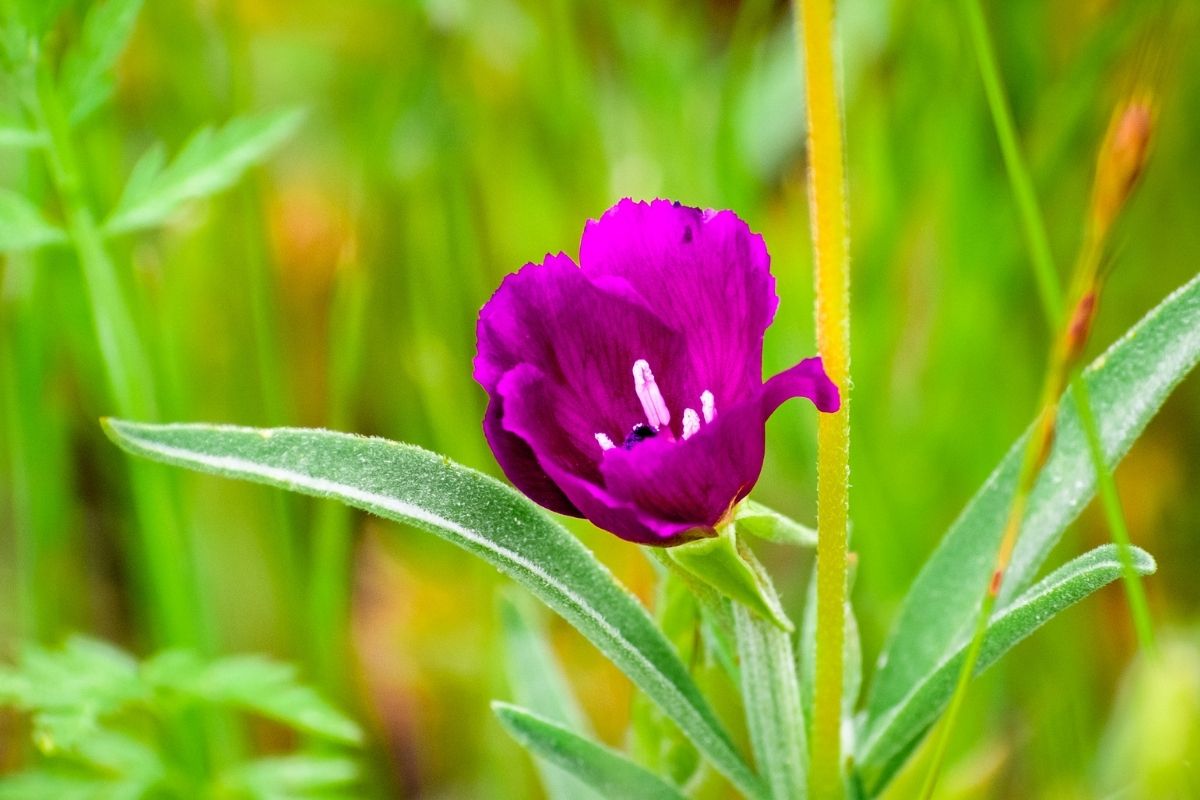
This flower is cup-shaped and a deep reddish-purple color, hence its name! It is very tolerant of droughts, and thrives in sandy or otherwise dry conditions, which is why it survives even in the desert.
Alongside its ability to remind the admirer of a fresh glass of wine, this flower also has health benefits, and can be used to provide pain relief (we’d prefer to take a glass of wine, though).
4. Desert Marigold
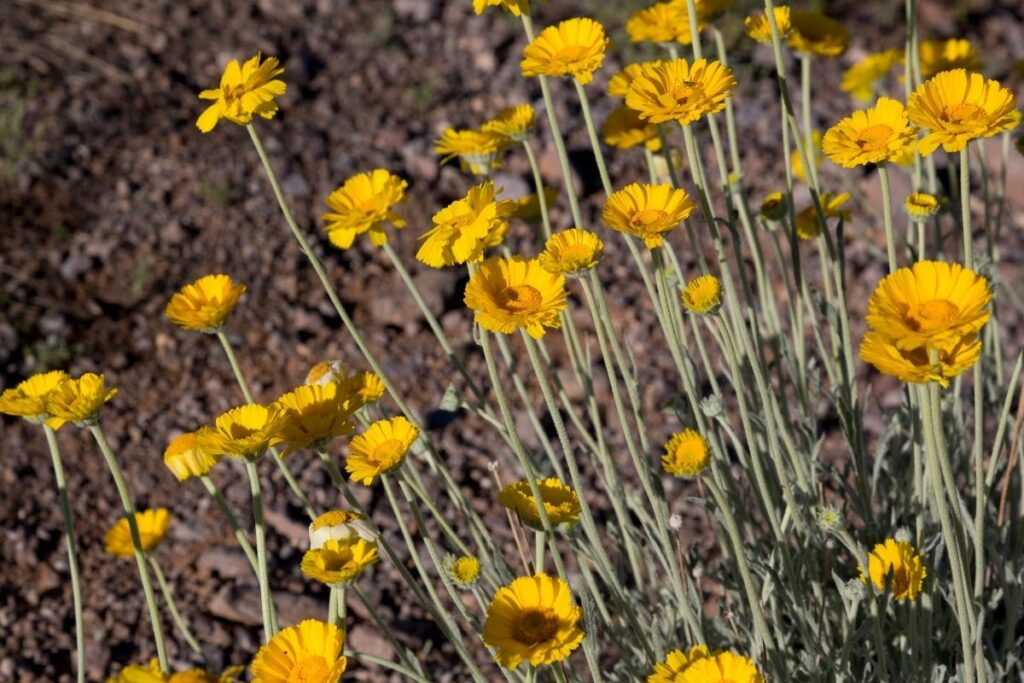
Next on the list is a bold and brilliant yellow flower, which resembles gold. These flowers tend to grow in small groups or clumps, and their plants can grow to a height of up to two feet tall.
They add a great splash of color to their dry surroundings, and are often used elsewhere in the world in dry garden landscapes.
RELATED: 26 Types Of Marigold Plants (Including Photos & Facts)
5. Desert Sage
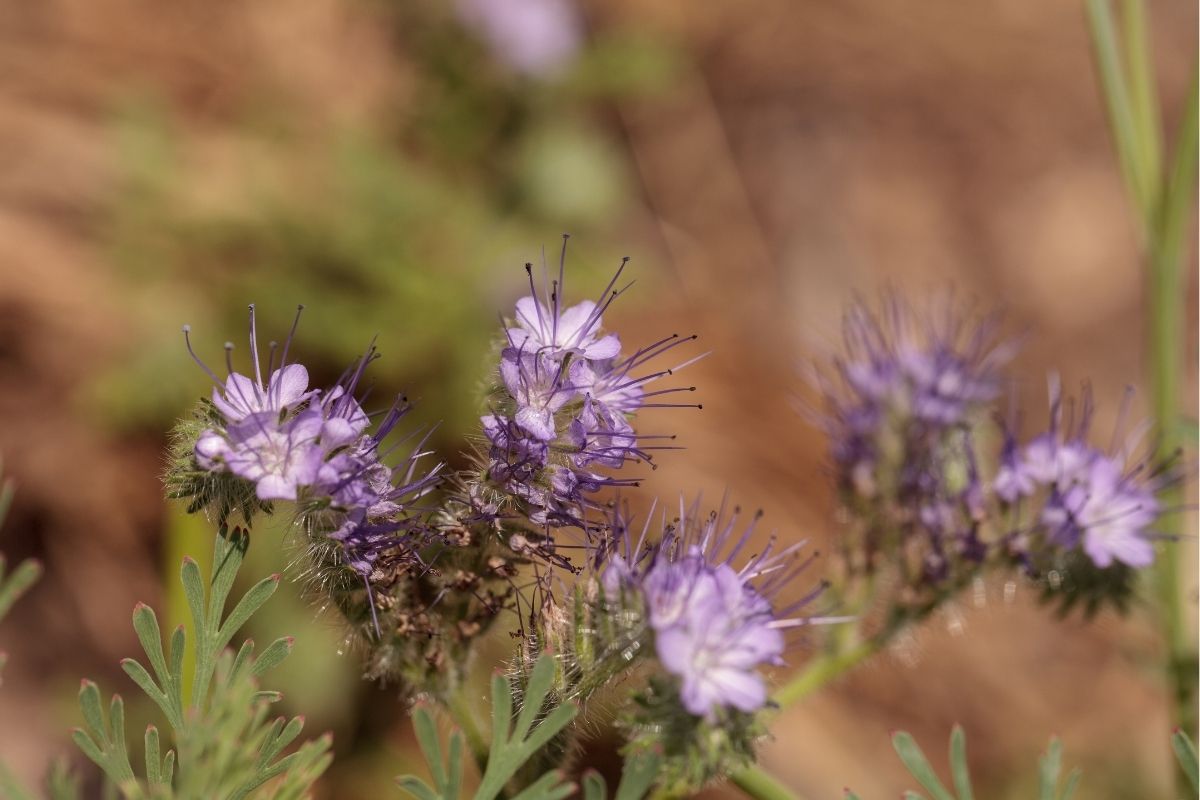
This has to be one of our favorite desert flowers. The colors of this flower make them stand out among the rest of the desert and its sparse foliage, and makes this a very special addition to its habitat.
The petals on this flower are a bold purple color, with hints of indigo and blue scattered throughout them.
From the center of these flowers grow long stamens, with bright yellow tips that create a dramatic contrast to the petals. It thrives in the desert because it can survive in high temperatures and low amounts of water.
So, if you have a regular fertile garden, you would struggle to grow these; if you have a dry desert garden, add these to your plants and watch butterflies come to say hello.
6. Devil’s Claw
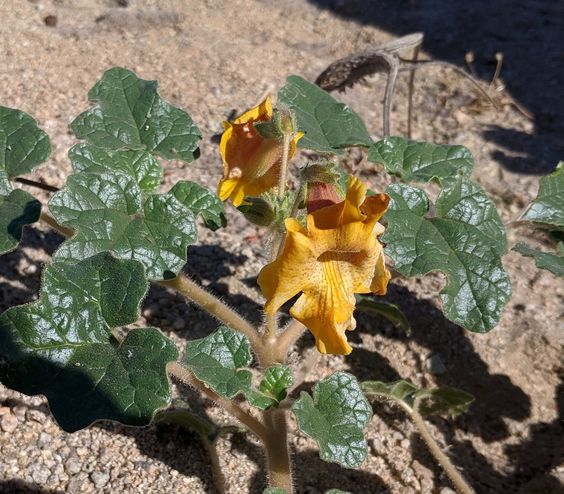
Devil’s Claw is a hitchhiking plant species that has sticky foliage, and woody fruits that grip and cling to its carriers – after which the plant is named.
In the United States, there are two types of devil’s claws that are native there.
One of these produces brilliant pink-colored flowers, while the other grows deep yellow ones. Both of these species are extremely attractive to bees, and have very fragrant scents.
7. Whitestem Paperflower
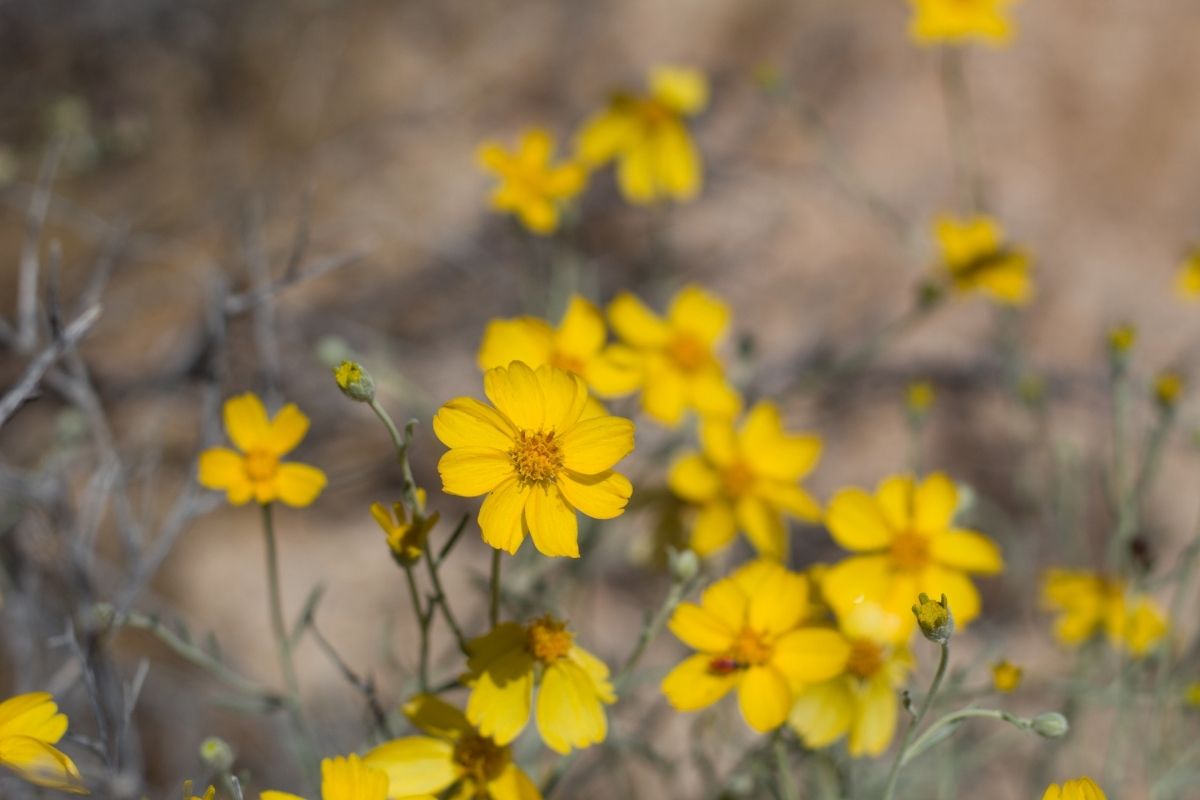
Once this pretty flower dies, its delicately thin petals dry and form a papery texture – hence its name. While it is alive, its petals are a brilliantly light yellow, and are in full bloom nearly the whole year long.
This pretty plant can be found all over the United States, including Nevada, New Mexico, California, Utah and even Mexico.
8. Mojave Aster
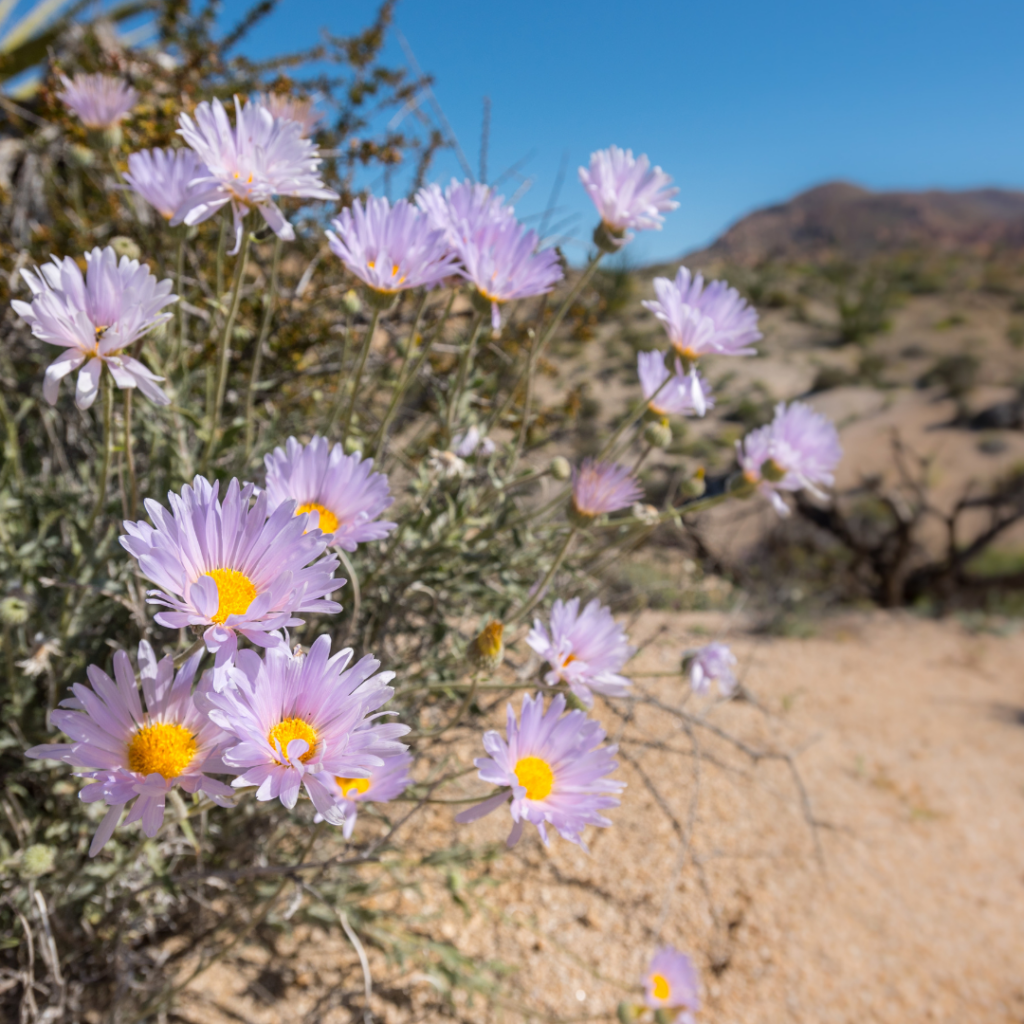
As is suggested by the name, this plant is native to the Mojave desert. It can also be found in the Sonoran and Great Basin deserts.
When this plant blossoms, which is in spring and occasionally in fall, the flowers that it grows have long white petals and a yellow core.
Because of this, they are often likened to daisy flowers. These flowers are not as widely opened as daisies, though, and remain in more of a cupped shape.
9. Desert Lily
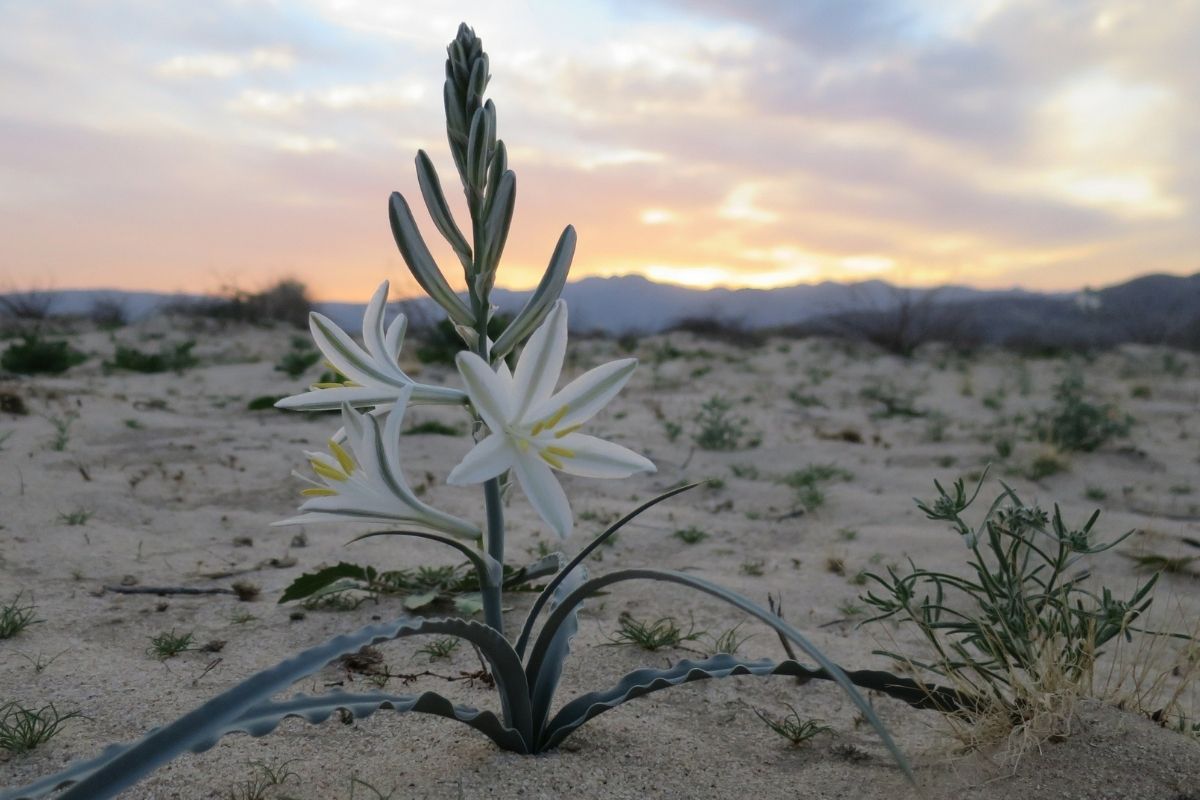
Regular lilies are beautiful and elegant flowers, and their doubt-resistant cousins are no different. Similarly to regular lilies that we would buy from our local florist, the petals on this flower are white.
However, the petals are not as long and slim as regular lily petals, but are slightly rounder and shorter.
The characteristic orange powdery stamens are on this lily, all of which sprout dramatically from the center of the petals, and are surrounded by an orangey tinge on the petals.
The flowers on the desert lily bloom from March through to May, and can reach a height of up to six feet tall.
10. Ice Plant
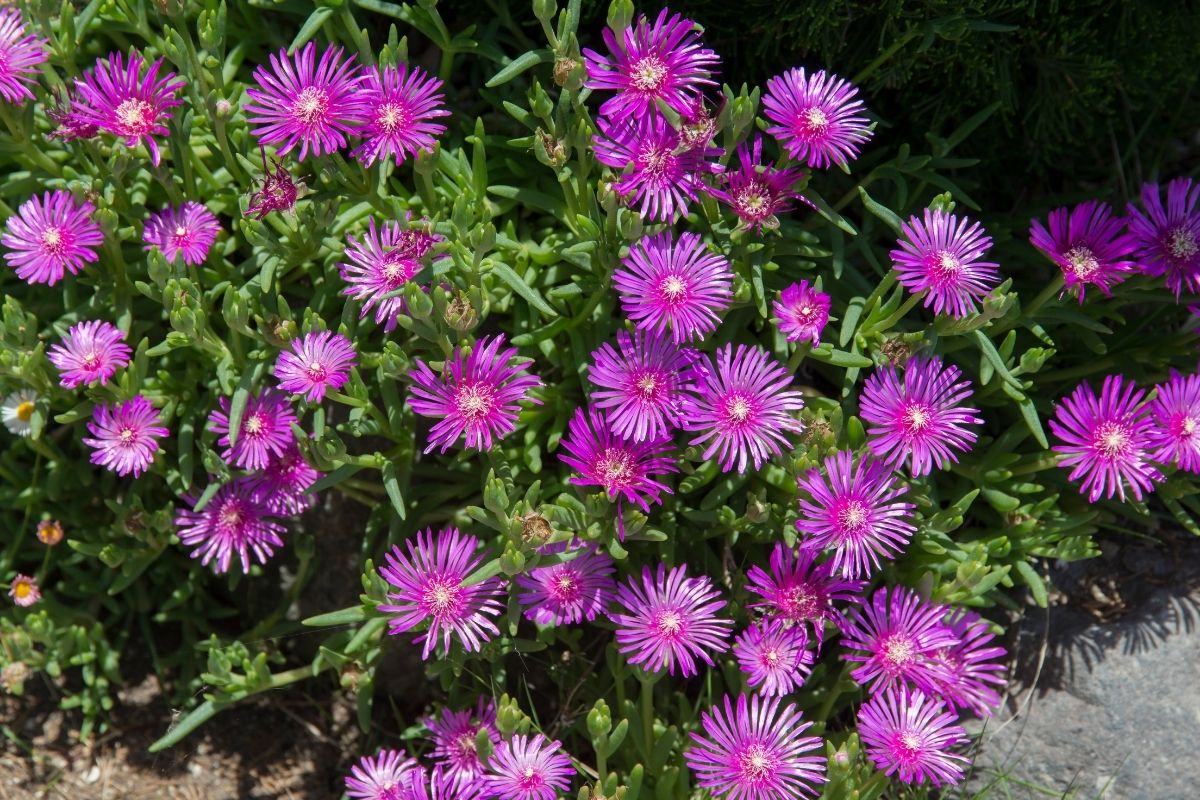
The flowers that grow on this desert plant come in a range of bright colors. The petals of these flowers can be pink (Starburst), white (Hardy White), purple (Cooper’s Ice Plant), or yellow (Hardy Yellow). All of these colors suit the flower perfectly, and are efficient at attracting bees and butterflies.
Our favorite Ice Plant is the purple Cooper’s Ice Plant; its color is so vibrant and is dissimilar to most other flowers found in the desert.
Similarly to the Mojave Aster, these flowers slightly resemble daisies – in their shape more so than their color schemes.
In the sunlight, these flowers seem to glisten, as if they have been covered with a sprinkling of ice shavings, hence their name.
11. Prickly Pear
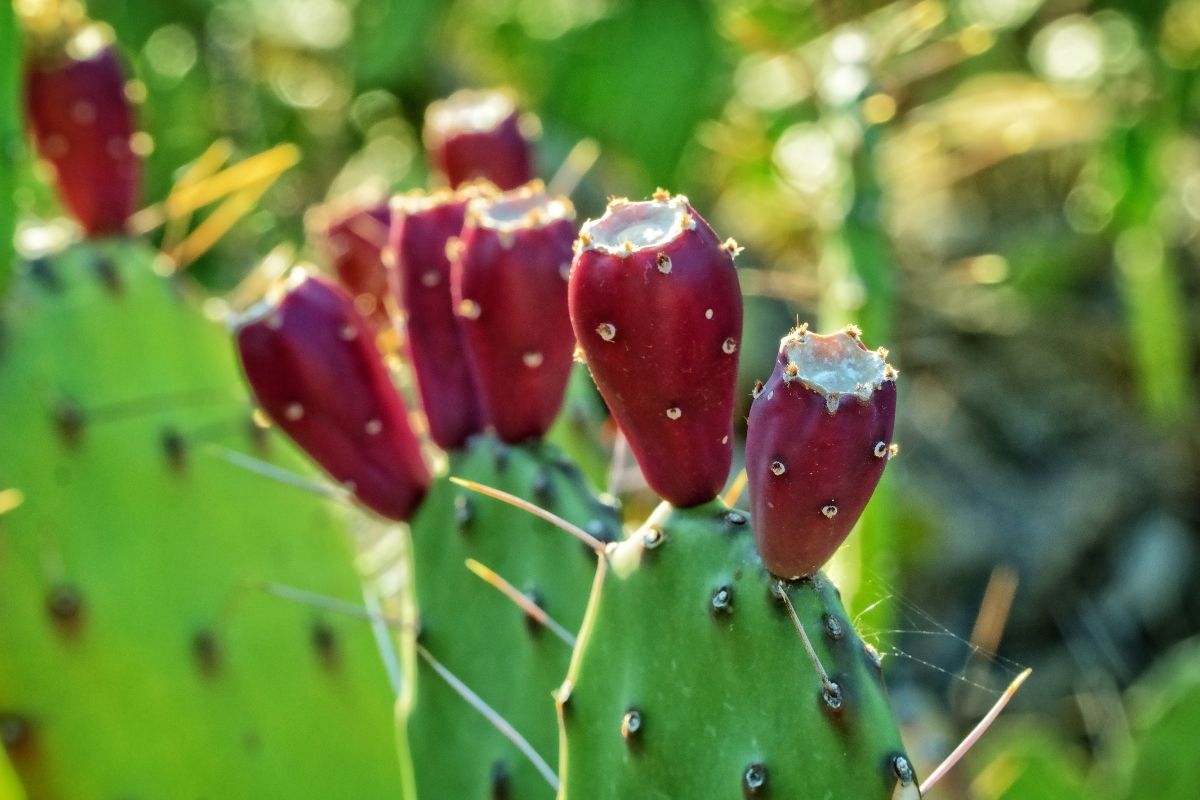
This plant is a cactus plant, and a flowering cactus plant at that. In the spring, these green spiky plants produce unique flowers that can either be red, purple, white, or pink in color.
These flowers are also unique because as they grow, they develop from flowers into edible fruits.
As well as the fruits that develop from the pretty flowers, the green cactus pads that constitute the body of the plant can also be eaten, either cooked or raw.
12. Tecoma Stans
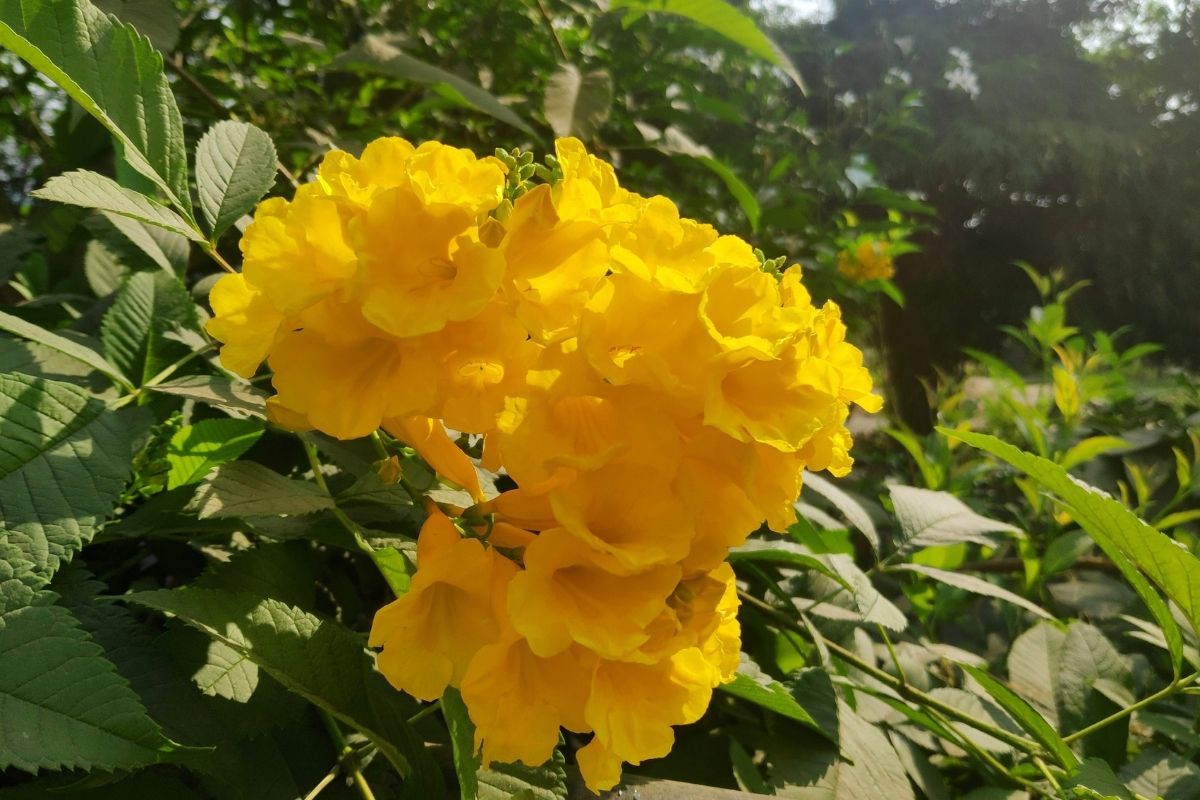
This shrub is native to the United States, and can also be called Yellow Trumpetbush, Ginger Thomas (we don’t know why either…), or Yellow Bells.
The first and last names give you an idea of what they look like; their petals are a warm yellow color and combine to form the shape of a bell or trumpet.
These flowers begin to bloom in late spring, and stay blossoming usually until the beginning of fall.
The nicest thing about this flower is that it attracts large numbers of hummingbirds, thanks to its shape that accommodates the birds’ beaks.
13. Mariposa Lily
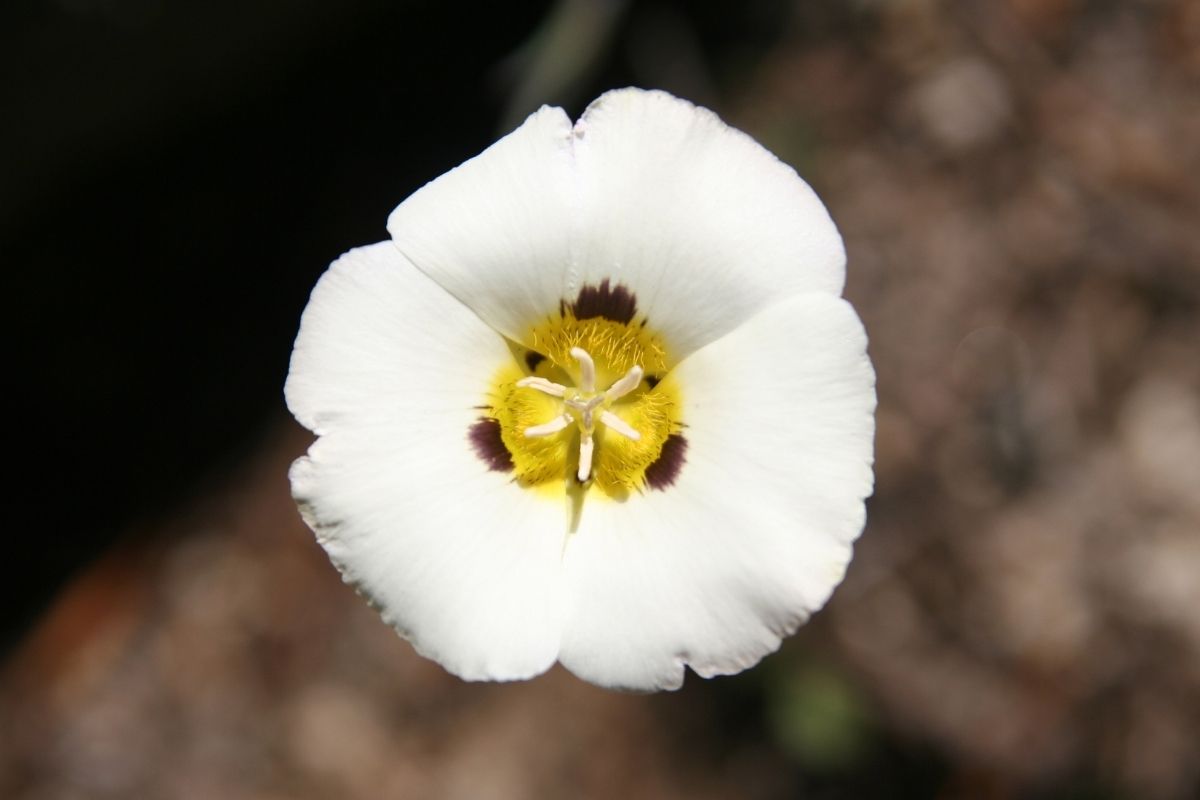
The second desert lily on our list is much more different from a regular lily than the first. Its petals can either be white, purple, yellow or blue in color, and tend to have spots dotted around the middle.
For example, the white Mariposa Lily has a definitive purple circle on each of its petals. The purple Mariposa tends to have a green stripe on each of its petals.
Unlike regular lilies, the petals on this flower are wide and rounded, and there are only three of them.
Because of this, the Mariposa Lily does not look quite as elegant as the Desert Lily, but is still a wonder to behold, and its color combinations are really interesting.
14. Golden Suncup

This plant has an unusually short stem between its body and each of its flowers, which is why its Latin name, brevipes, means ‘short foot’. Just like the buttercups that we see grow naturally in grassy fields in summer, these flowers are bright yellow.
Sometimes, there will be a red dot at the end of each petal, which gives the flower a little more character. Unlike buttercups, these flowers have thick stamens and large anthers.
15. Apache Plume
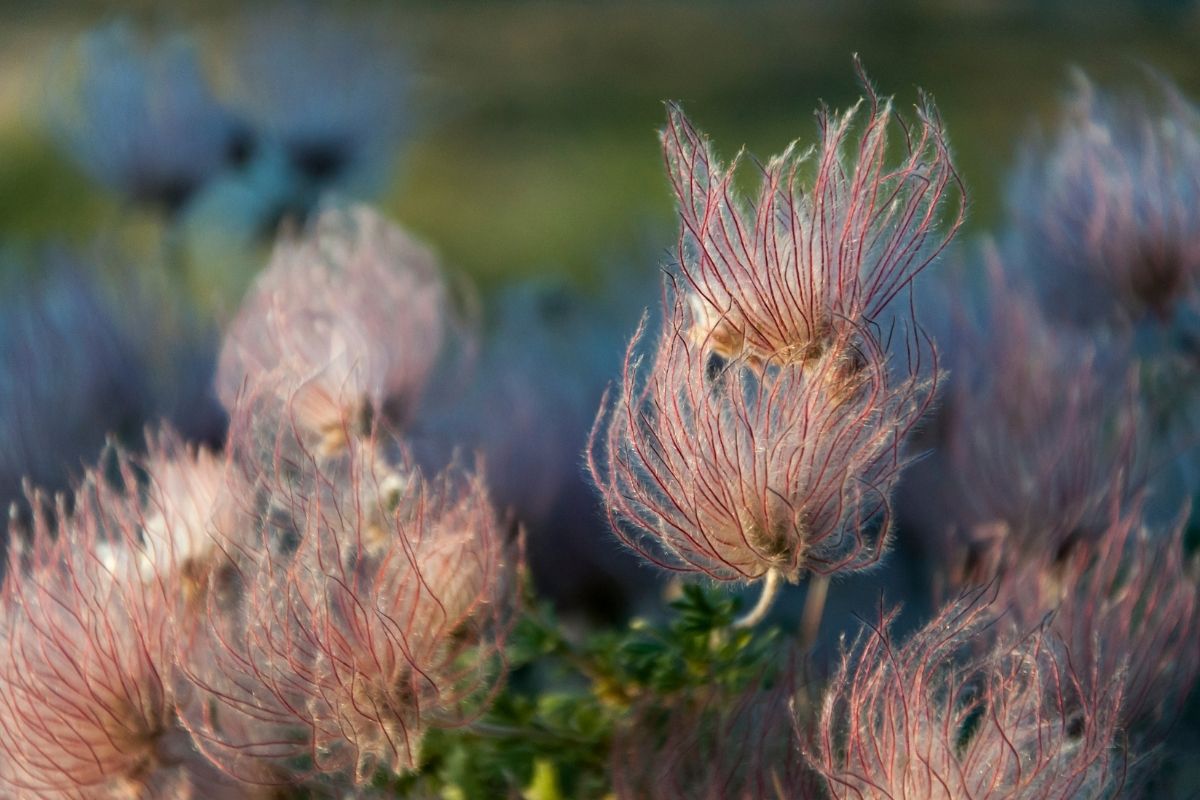
This is a thick shrub that is drought resistant and thrives in full sunlight, which is why it flourishes in desert conditions.
The plant begins to bloom in late spring, usually around May, and displays flowers up until mid fall, around October. The flowers that grow from this plant are delicate and small, and have a pure white color.
Around each flower are lots of fluffy pink hairs that contain the seeds, and that provide a pretty contrast to the simple white petals.
These flowers attract all sorts of wildlife, including birds, bees, and butterflies, all of which enhance their beauty.
Not only do wild animals like this flower, but humans often use it as a hair growth stimulator, too! Occasionally, these plants can reach a whopping height of 7 feet, but are usually around the 4-foot mark.
Final Thoughts
Before exploring the wildflowers of the desert, we assumed that cacti were the only green lifeforms there. We were pretty far off, right?
As you can see from our list, there are so many beautiful flowering plants that have adapted to flourish in the harsh conditions of the desert, and which we can now imagine provide splashes of much-needed color among the plain sandy landscapes.
If you have a patch of rocky soil or dry sandy ground, why not nab some seeds and plant a new desert beauty in your garden!
Editor’s Recommendations
21 Marvellous Desert Plants (Including Pictures)
18 World Famous Yellow Cactus Varieties for Homes and Gardens







